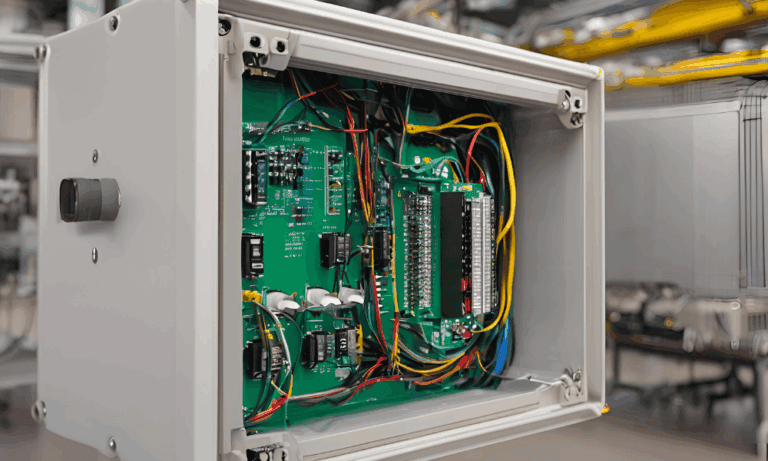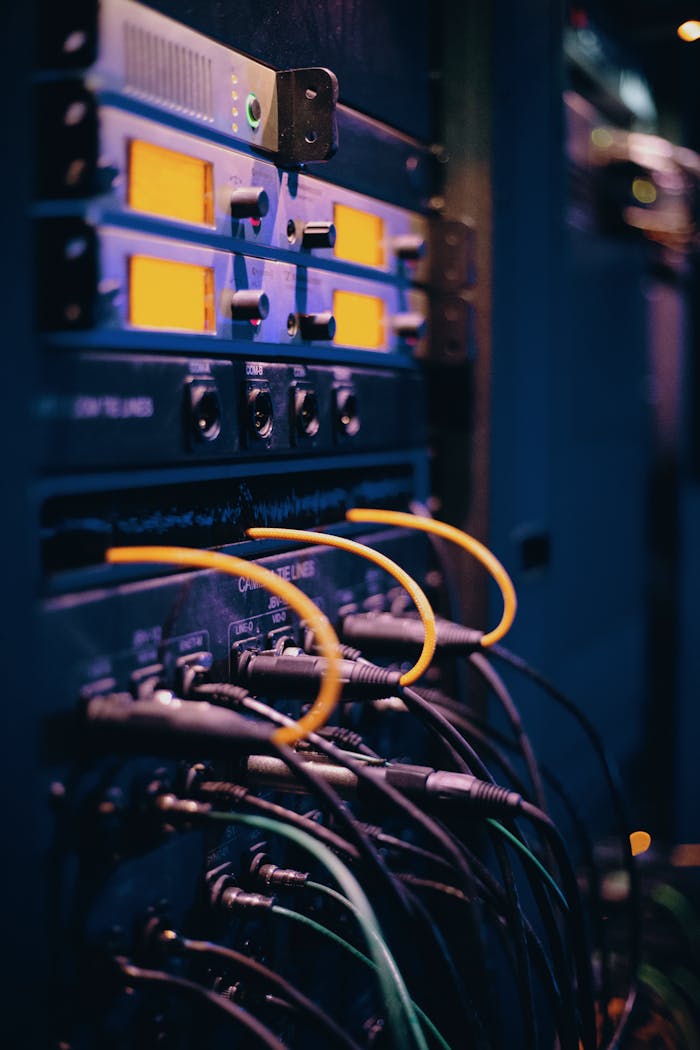Electrical fires, arc flashes, and thermal overloads are three disasters every engineer and manufacturer strives to avoid. But performance and material reliability issues can cause major problems and costly setbacks too. Electronic enclosures serve as a critical line of defense, protecting sensitive components and supporting the overall safety and reliability of electronic systems. When thoughtfully designed, enclosures with integrated safety features like effective ventilation, EMI (electromagnetic interference) protection, and corrosion resistance can dramatically reduce risk, ensure compliance with safety standards, and extend the lifespan of critical electronics.
Choosing built-in safety features such as enclosure ventilation, EMI protection and more helps to prevent serious hazards and assures compliance with industry standards and long-term reliability.
Electronic Enclosure Safety and Performance
The primary function of an electronic enclosure is to protect the sensitive internal components from external factors, such as dust and moisture. However, some of the most serious safety threats can occur internally.
Thermal Management and Enclosure Ventilation
Improper heat dissipation, poor enclosure ventilation, and inadequate spacing can result in dangerously high internal temperatures. Thermal management is one of the most important safety features. The potential consequences of poor enclosure ventilation and high internal temperatures include:
- Components overheating, resulting in reduced performance and a shortened lifespan.
- Thermal events, such as melting, smoking, or even fire (in extreme cases where heat builds up unchecked).
- Electrical arcing, where an electric current jumps across a gap in a circuit or between two conductors and creates a visible spark or arc.
Too much heat inside electrical enclosures isn’t just inconvenient—it’s risky and expensive. These boxes typically house essential, high-value electronics that keep operations running smoothly. When heat isn’t properly controlled, it can accelerate equipment wear, trigger unexpected failures, and ultimately force costly repairs or replacements. Worse yet, it can bring production to a halt, compounding the impact with unplanned downtime. Proper enclosure ventilation and a strong thermal management plan can mitigate cost and safety risks.
EMI and RFI Shielding
Robust shielding against electromagnetic interference (EMI) and radio-frequency interference (RFI) is essential for protecting sensitive electronic components from electrical noise caused by nearby equipment, wireless signals, or internal components. Proper shielding protects from interference that can disrupt system performance, corrupt data, and lead to unpredictable behavior.
EMI/RFI shielding blocks or redirects these unwanted signals, ensuring reliable communication between devices and preserving the integrity of critical operations. Failing to incorporate effective shielding can result in increased error rates, malfunctioning equipment, and costly troubleshooting or downtime, especially in environments where precision and reliability are non-negotiable.
Material Degradation and Corrosion Resistance
Corrosion-resistant enclosures are crucial for protecting sensitive electronics, especially in harsh environments like coastal regions or industrial settings. The exposure to salt or chemicals can rapidly degrade materials, compromising their integrity and leaving internal components vulnerable.
By investing in enclosures that use corrosion-resistant materials such as stainless steel or aluminum – manufacturers can extend the lifespan of their equipment and avoid issues that disrupt operations and erode profitability over time.
Failing to consider safety features can pose physical risks and carry significant financial implications. Beyond equipment replacement and repair costs, organizations may face legal liability, reputational damage, and fines for non-compliance with safety regulations.
Safety Standards for Electronic Enclosures:
Safety standards help ensure that electronic enclosures protect the internal equipment and ensure the safety of everyone who uses it. Two of the most notable are the IP ratings and NEMA standards.
IP Ratings
The Ingress Protection (IP) ratings are internationally used guides that measure how effectively an enclosure can shield internal components from dust and liquids. The system for IP rated enclosures uses a two-digit code. The first digit indicates protection against solid objects, such as dust, fingers, tools, etc., and the second against water penetration, like dripping, splashing, and submersion.
NEMA standards
The National Electrical Manufacturers Association standards (NEMA) are primarily used in North America. These guides provide a broader scope than IP ratings by including considerations like corrosion resistance, environmental protection, durability, and internal temperature control. NEMA rated enclosures are primarily focused on industrial settings and measure how enclosures can withstand conditions such as corrosive atmospheres and extreme temperatures.
By mandating specific construction and testing protocols, both IP ratings and NEMA standards help ensure electronic enclosures perform reliably and safely under a range of conditions.
Why Materials Matter for Electronics Safety and Performance
An enclosure’s material directly affects how well it can protect internal components from heat, moisture, electromagnetic interference, and environmental wear. There are many material options, including plastic, stainless steel, and aluminum.
Plastic Enclosures
Pros:
- Lightweight and easy to handle.
- Cost-effective, especially for low-volume or indoor applications.
- Non-conductive, so it provides electrical insulation.
- Easy to mold.
Cons:
- Poor heat dissipation, meaning it can trap heat.
- Limited EMI/RFI shielding.
- Low durability to impacts and harsh environmental conditions.
- Poor outdoor performance because it’s prone to degradation.
Stainless Steel Enclosures
Pros:
- Durable and corrosion resistant.
- Effective in harsh environments.
- High impact resistance.
Cons:
- Heavy and can be difficult to transport and install.
- Expensive to manufacture.
- Less thermally conductive than aluminum.
Aluminum Enclosures
Pros:
- Excellent heat dissipation.
- Naturally provides EMI/RFI shielding.
- Lightweight and durable.
- Corrosion-resistant, especially when anodized or coated.
- Cost-effective for mass production and easy to customize.
Cons:
- Is a conductive material, so it requires grounding.
- Slightly higher cost than plastic in small runs.
Compared to plastic and stainless steel, aluminum strikes a strong balance between strength, thermal performance, and cost, which makes it an ideal choice for both general-purpose enclosures and those built for demanding environments.
One of the most significant advantages of aluminum is its exceptional thermal conductivity. The heat generated by internal components can efficiently dissipate through the enclosure’s surface. Another key benefit of aluminum is its superior EMI/RFI shielding. Aluminum naturally blocks and absorbs electromagnetic waves, helping to maintain signal integrity and prevent system disruptions.
Aluminum also delivers robust performance in outdoor environments. It is naturally corrosion-resistant, especially when anodized or coated, and can withstand exposure to rain, UV radiation, and temperature fluctuations without degrading. Finally, because it is lightweight, easy to machine or cast, and compatible with a range of surface finishes, aluminum is cost-effective in mass production.
Tailored Protection for Your Critical Components
Lansing Instrument Corp. offers two families of aluminum electronic enclosures, MicroPak and GrayBox, built to withstand various environments and operating conditions similar to those discussed in this article.
Additionally, Lansing offers tailoring services to ensure enclosures are configured to meet the specific requirements of each application. Their solutions include enhanced shielding, enclosure venting and spacing options, and more.
Enclosure designs are engineered for long-term reliability and significantly enhance the performance and lifespan of electronics.
Connect with the Lansing support team for personalized assistance and discover tailored solutions to help safeguard your electronics.


